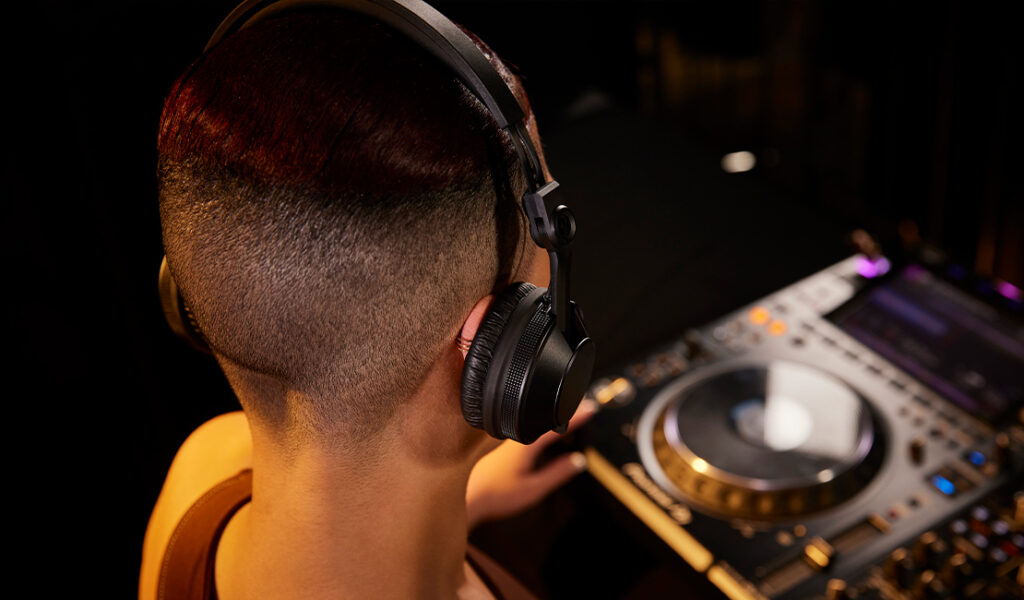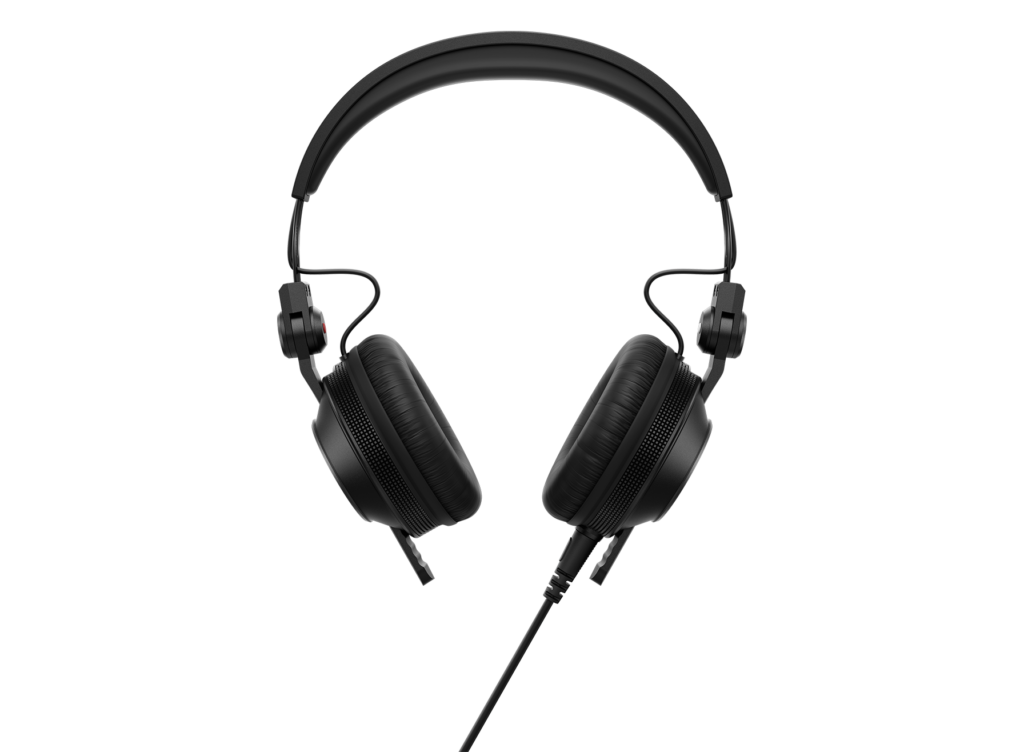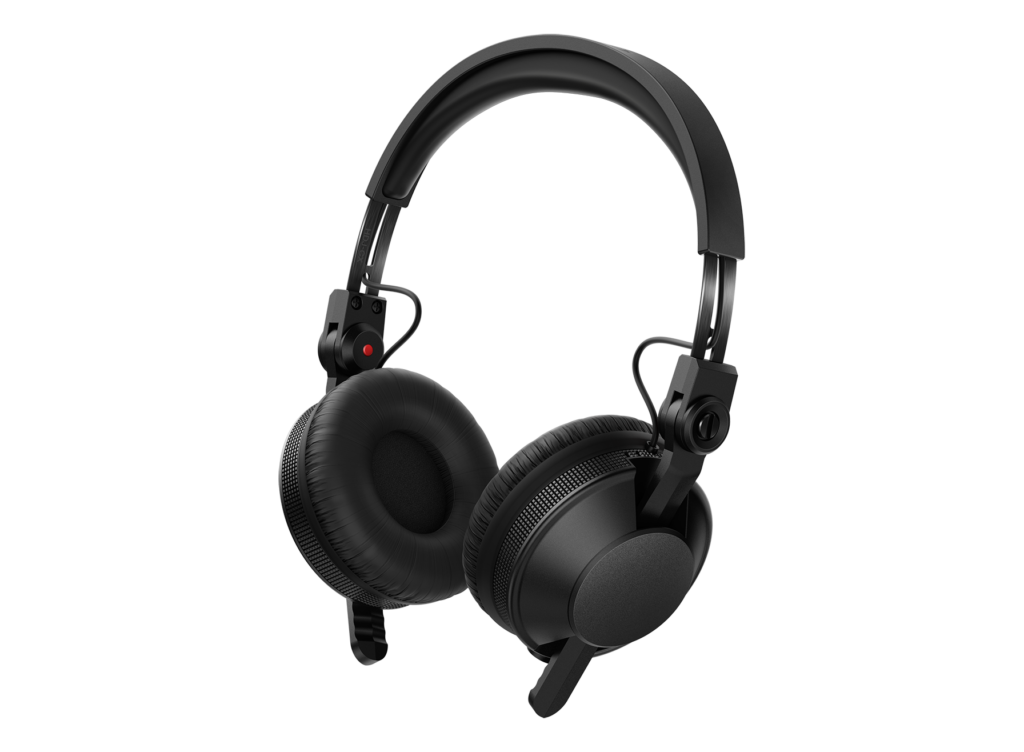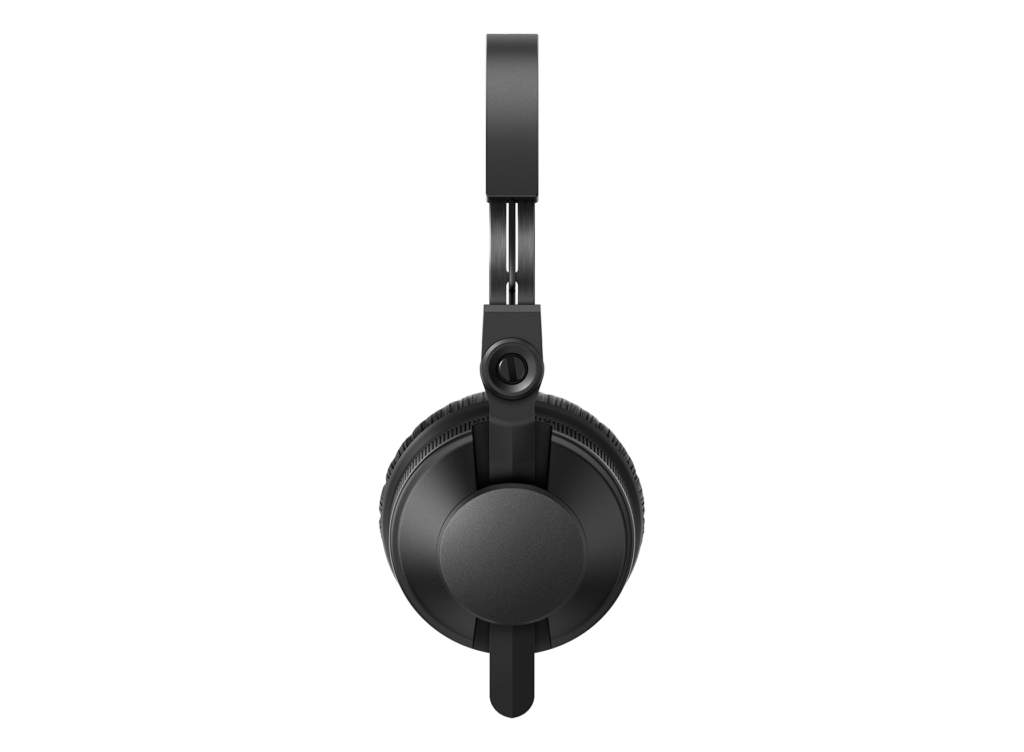Pioneer’s new lightweight headphones offer an ultra-minimal alternative to Sennheiser HD25s. Greg Scarth finds out if the Pioneers can beat the classics.

When Pioneer announced the arrival of their HDJ-CX DJ headphones back in March, it was hard not to compare them to Sennheiser’s classic HD25s. The Sennheisers are a staple of DJ booths around the world, loved as much for their durability as their sound and comfort. Pioneer already make a large range of very good DJ headphones, but the HDJ-CXs seemed like a deliberate attempt to take on the HD25s with a minimalist, lightweight design. At just 136 grams without a cable, the HDJ-CXs are certainly some of the lightest DJ headphones on the market.
Unpacking the box, the first impression of the CXs is that they’re very small. The thin headband and compact on-ear cups make everything feel extremely sleek and streamlined, with a tidy design and nice touches like a small strip of exposed steel on the headband. The obvious comparison is with the Sennheiser HD25 Lights, another ultra-minimalist design with a thin headband, but the CXs have a couple of nice little details which help them compete with the more expensive HD25 Plus model. There are a few more accessories in the box than you get with HD25 Lights (two cables, a spare set of ear pads and an adapter), but more importantly you’ll also find that both ear cups rotate, allowing you to monitor with one ear at a time. The ear cups of the HD25 Lights don’t rotate at all, while only the left-hand ear cup of the bigger HD25s can be rotated.
Overall, then, it’s a case of the CXs being similar enough to feel like they’re in the same ballpark as the classic HD25s while differentiating themselves in a few small but noticeable ways. The wiring arrangement around the ear cups is also marginally tidier than the HD25s thanks to the detachable cable design (with a choice of straight and coiled cables provided in the box). The cable only attaches on the left-hand side, as with most Pioneer headphones. The two sides are marked with red and white dots instead of R and L like most headphones, but once you get used to the cable being on the left-hand side you don’t need to remember the colour code.

Plugging the CXs in and getting started listening to a few tracks, the prominent bass delivery stands out. Pioneer say that the CXs deliver bass down to 5 hertz, which is inaudible to humans, but more importantly they’ve got a pronounced, weighty delivery of the bass and sub-bass frequencies which you can hear. Further up the frequency range, they’re clear and articulate in a similar way to the HD25s, but overall it’s a less flat delivery. (On that point, a lot of producers like the HD25s for basic production tasks. The CXs probably aren’t as well suited to that application, but that’s not their intended use anyway; the HD25s are more of an all-rounder.)

Aside from their sound, the HDJ-CXs are hugely impressive in terms of comfort. The light weight helps on that front, but the soft padding of the ear cups and smooth vinyl ear pads play their part too. It’s not a night-and-day difference alongside the HD25s, but the CXs match the Sennheisers for comfort and beat them in terms of adjustability thanks to the two rotating ear cups. The adjustable/rotating arms on the end of the headband initially feel extremely loose, but that’s deliberate; at the pivot points on each side, an adjustment screw allows you to customise the rotation resistance, making them as tight or as loose as you like. Comfort can sometimes be a trade-off with isolation, since tighter headphones will block out external sounds more easily, but the CXs manage to pull off the trick of staying comfortable while blocking out plenty of sound (an important consideration for DJs).
Accessories aren’t usually the main consideration when choosing headphones, but the CXs include everything you’d expect from a premium model. There’s a choice of 1.8 metre straight or 1.6 metre coiled cables in the box (the latter extending up to 3 metres) plus a spare pair of vinyl ear pads in case the originals get worn out or damaged. There’s also a good quality threaded ¼-inch adapter and an adapter holder, which grips to the cable and holds the adapter tightly in place. We expect a lot of potential Pioneer HDJ-CX owners to be weighing them up versus the Sennheiser HD25 Pros or HD25 Lights. In terms of which is better it’s largely a case of personal taste since both are high-quality headphones with excellent sound, but one factor which might be relevant is that Pioneer are pretty good at supplying replacement parts should they be required, but Sennheiser parts availability is second to none, with just about every individual HD25 part available off the shelf.

Taking on a classic like the Sennheiser HD25s is a tough task, but Pioneer have pulled it off. The HDJ-CXs are lightweight but tough, with great build quality, excellent bass-forward sound and superb comfort. Headphones are such a personal choice that it would be impossible to say which is ‘better’ out of the two, but the CXs offer great value for DJs who like minimalist headphones and want a little more bass and a little more adjustability than the HD25s offer.
Greg Scarth
More info/buy